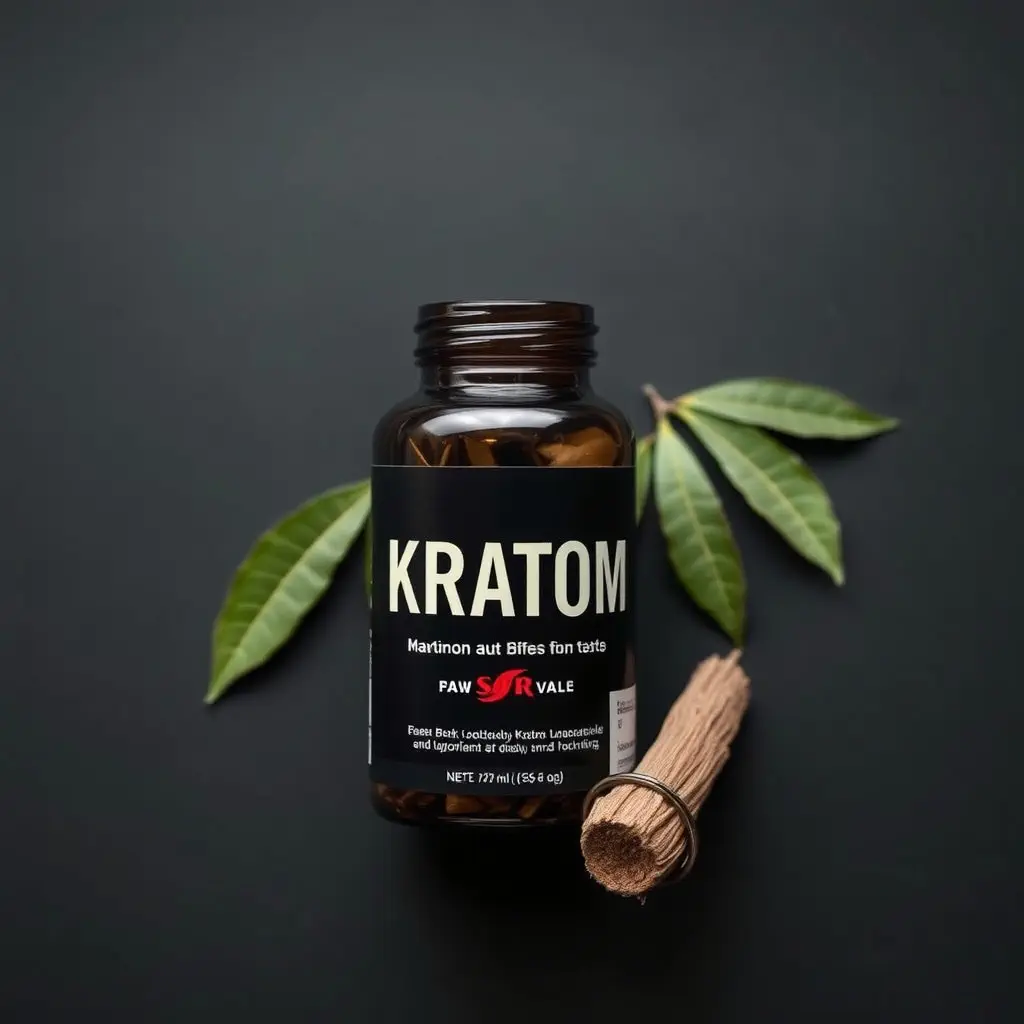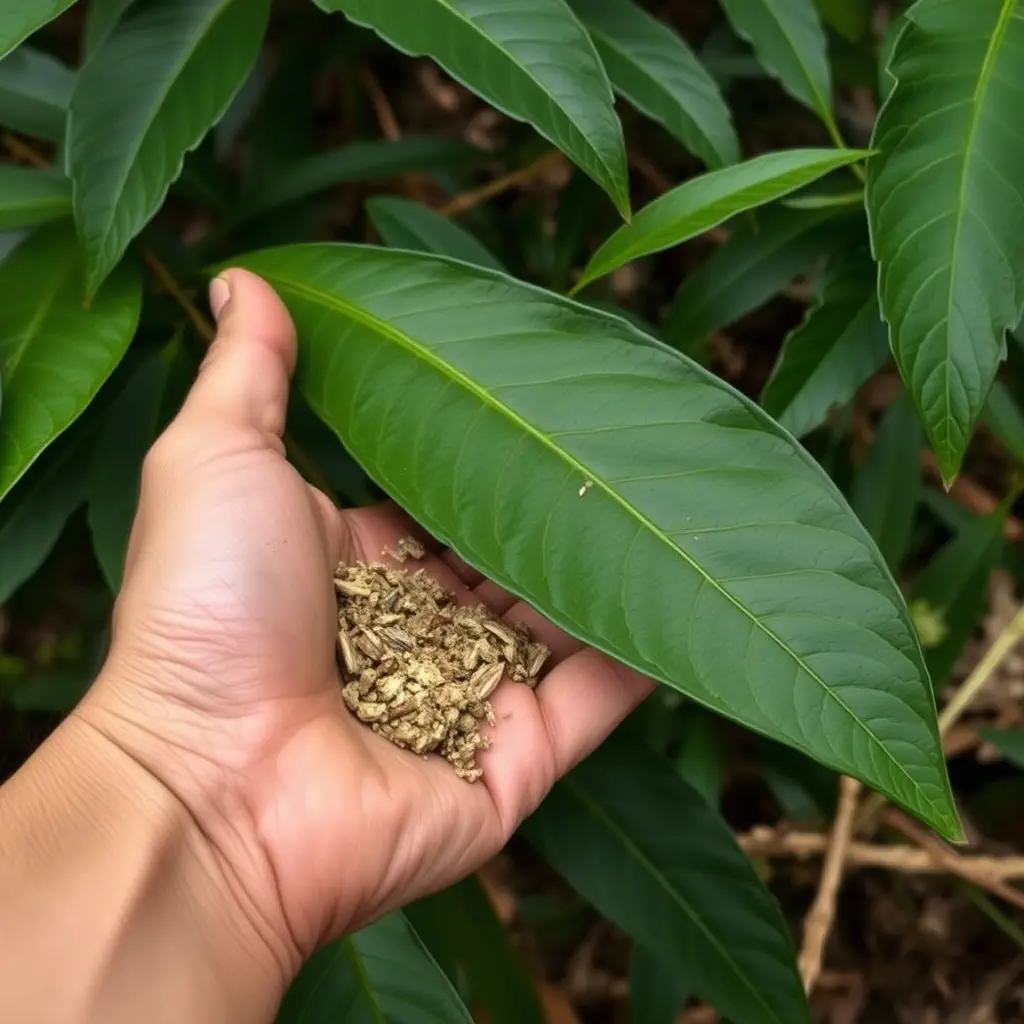Kratom, a supplement from Southeast Asia, is being studied for its potential benefits in supporting individuals with fibromyalgia, particularly in improving sleep quality. Preliminary research suggests that certain kratom strains, like Red Bali and Red Borneo, may offer sedative effects that help users fall asleep faster and maintain sleep throughout the night, addressing common issues of pain and sleep disturbances associated with the condition. The alkaloids 7-hydroxymitragynine and mitragynine in kratom are thought to interact with opioid receptors, offering a natural alternative for sleep aid without the side effects often seen with pharmaceuticals. However, it's important to use kratom judiciously under medical guidance due to its potency and potential interactions with other medications. Users should start with low doses and consult healthcare professionals before integrating kratom into their fibromyalgia management, ensuring careful monitoring of its effects on sleep and pain levels for safe and effective use. Proper dosing and informed usage are key to leveraging kratom as a natural support option for those experiencing fibromyalgia symptoms.
Exploring the intersection of natural remedies and sleep science, this article delves into how kratom can offer profound benefits for individuals grappling with the sleep disturbances often linked to fibromyalgia. We will uncover the mechanisms by which kratom may enhance both sleep quality and duration, particularly for those suffering from this condition. From understanding the therapeutic effects of kratom to navigating the best strains and dosages, this guide is tailored to support those seeking natural fibromyalgia relief through kratom use.
- Unveiling the Role of Kratom in Enhancing Sleep Quality for Fibromyalgia Sufferers
- Navigating the therapeutic effects of kratom on sleep disturbances associated with fibromyalgia
- Kratom Strains and Dosage: A Guide for Optimal Sleep Support in Fibromyalgia Management
Unveiling the Role of Kratom in Enhancing Sleep Quality for Fibromyalgia Sufferers

Kratom, a plant originating from Southeast Asia, has garnered attention within the realm of natural remedies for its potential to alleviate symptoms associated with fibromyalgia. For those suffering from this chronic condition characterized by widespread pain, fatigue, and sleep disturbances, kratom may offer a dual benefit: not only can it provide pain relief but also improve sleep quality. Studies suggest that certain strains of kratom, particularly those with higher levels of 7-hydroxymitragynine, can have sedative effects that help fibromyalgia patients achieve more restful sleep. This is crucial for individuals whose sleep patterns are often disrupted due to the condition’s symptoms. The alkaloids present in kratom leaves interact with the body’s opioid receptors, which can lead to a reduction in pain and an enhancement of relaxation, facilitating better sleep quality and duration. Users report that kratom helps them fall asleep faster and maintain sleep throughout the night without the side effects often associated with pharmaceutical sleeping pills. As a result, kratom for fibromyalgia support is becoming an increasingly popular topic among those seeking natural alternatives to manage their condition holistically. It’s important for potential users to approach kratom use responsibly and consult healthcare professionals before integrating it into their treatment regimen, as dosage and strain selection can significantly impact its efficacy and safety.
Navigating the therapeutic effects of kratom on sleep disturbances associated with fibromyalgia

Studies have indicated that individuals with fibromyalgia often experience sleep disturbances, which can exacerbate the chronic pain and fatigue associated with the condition. Kratom, a plant-based supplement from Southeast Asia, has garnered attention for its potential therapeutic effects on sleep quality and duration in those with fibromyalgia. Users report that certain strains of kratom can help alleviate pain, reduce anxiety, and promote relaxation, which are crucial factors for improving sleep patterns. The alkaloids present in kratom leaves, such as 7-hydroxymitragynine and mitragynine, are believed to interact with the body’s opioid receptors, offering support for individuals seeking natural alternatives to manage their symptoms. Clinical trials have shown promising results, suggesting that kratom for fibromyalgia support may be a viable option for some patients. However, it is imperative to approach the use of kratom with caution due to its potential for dependence and interaction with other medications. Users should consult healthcare professionals before incorporating kratom into their treatment regimen to ensure safe and effective use for sleep disturbances associated with fibromyalgia.
Kratom Strains and Dosage: A Guide for Optimal Sleep Support in Fibromyalgia Management

Kratom, derived from the leaves of Mitragyna speciosa, has been a subject of interest in the realm of alternative treatments for conditions such as fibromyalgia. For individuals grappling with this chronic disorder characterized by widespread pain and disrupted sleep patterns, kratom strains are being explored for their potential to support restful slumber. Among the various kratom strains, some are more favored for their sedative properties, which can be beneficial in managing symptoms of fibromyalgia, particularly at night. For instance, red vein strains like Red Bali and Red Borneo are commonly used due to their relaxing effects, which may aid in falling asleep faster and improving overall sleep quality. It is crucial for users to understand the appropriate dosage as it can significantly influence the effectiveness of kratom for sleep support. Typically, a moderate dose—ranging from 2 to 6 grams—is recommended for sleep, as higher doses might lead to grogginess or unwanted side effects during waking hours. Users should start with a lower dose and gradually titrate upward based on individual response and tolerance.
When incorporating kratom into a fibromyalgia management routine, it is essential to approach its use with caution and informed guidance. The interaction of kratom with other medications must be carefully considered to avoid adverse effects or contraindications. Additionally, individuals should consult healthcare professionals before integrating kratom into their treatment plan, as it may not be suitable for everyone. Regular monitoring of sleep patterns and pain levels is necessary to assess the efficacy of kratom for fibromyalgia support and make any needed adjustments to dosage or strain selection. Proper dosing, combined with a consistent routine, can potentially contribute to better sleep quality and duration, which are critical components in the overall management of fibromyalgia.
In conclusion, the evidence presented indicates that kratom, when used responsibly and under a healthcare provider’s guidance, can play a beneficial role in addressing sleep disturbances among individuals with fibromyalgia. The exploration of kratom strains and appropriate dosing provides valuable insights for those seeking natural support for their condition. It is clear that kratom for fibromyalgia support could be a significant adjunct to traditional treatment protocols, offering hope for improved sleep quality and duration. As with any therapeutic intervention, careful consideration and professional supervision are essential to optimize outcomes and ensure safety. Future research should continue to investigate the long-term effects of kratom use in this population to further elucidate its potential role in fibromyalgia management.






